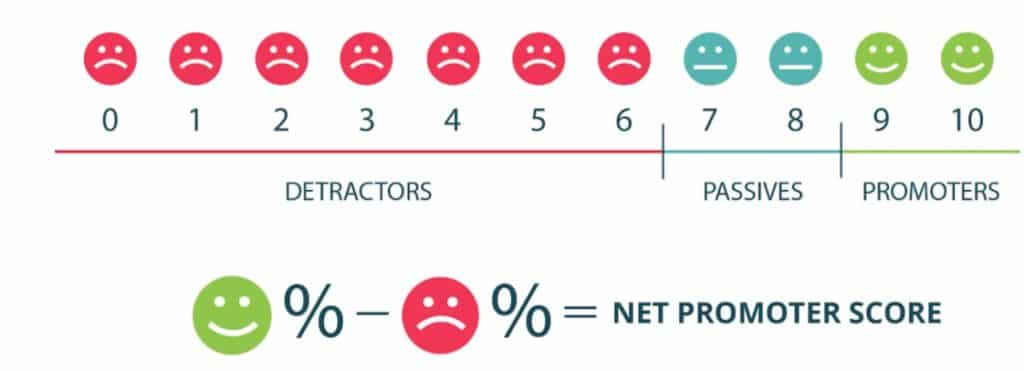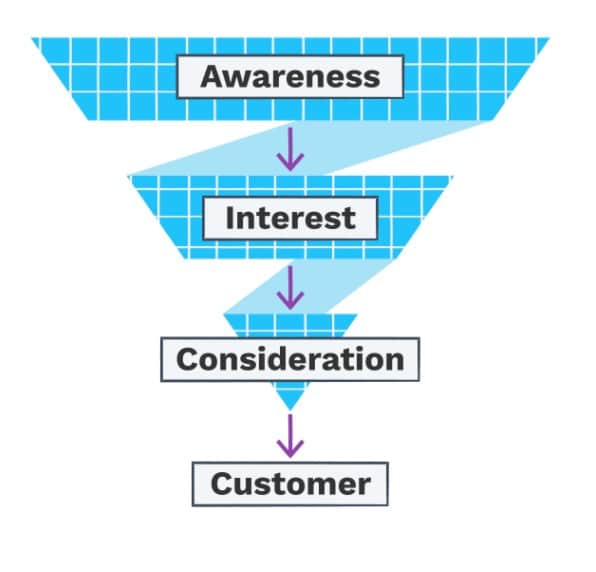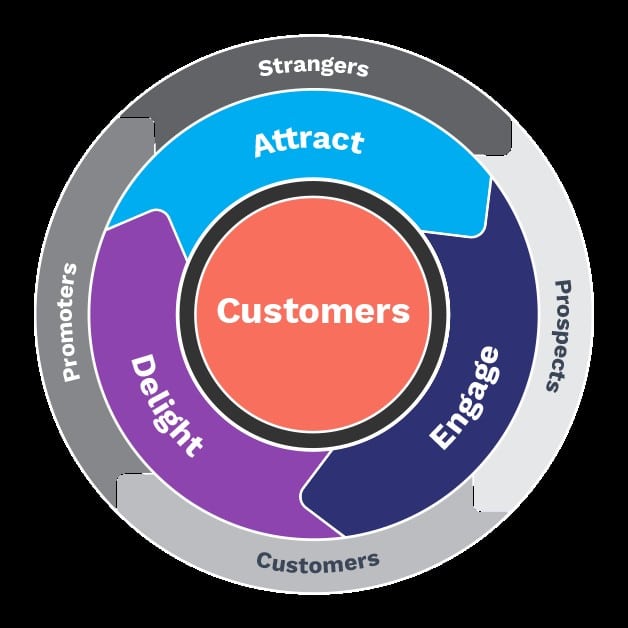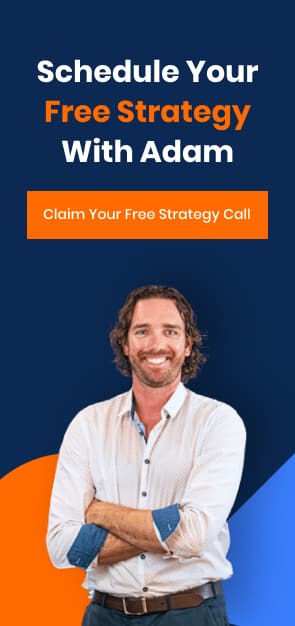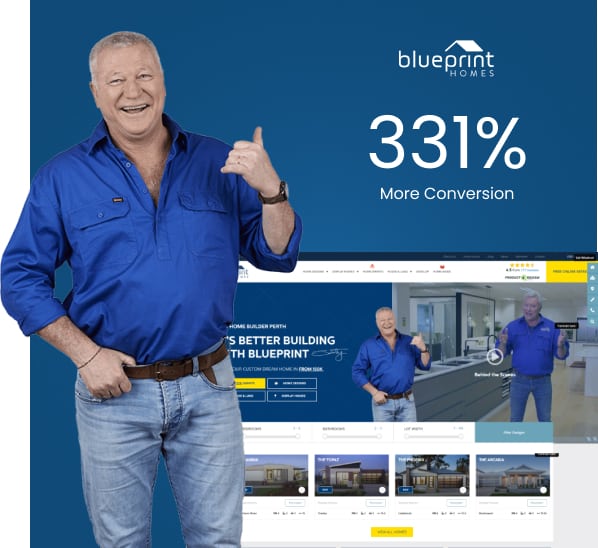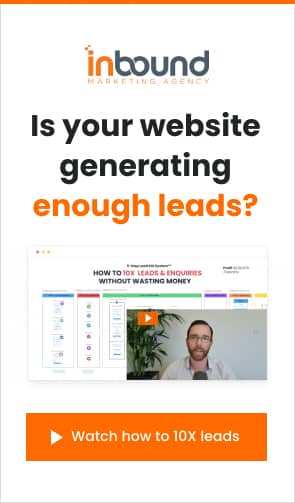How ditching the acquisition funnel can supercharge growth
Building great technology or products only gets you so far. Customers expect more. They expect relationships as well as results. If you don’t know your customers and they don’t know you, there will come a time when they start to disengage and your growth will start to plateau. If you don’t know the signals and how to act on them, then you’re going to be in trouble. In this blog we will go through how to identify these signs and what you can do about it.
The signs of slowing growth
Net Promoter Score (NPS) is the percentage of customers rating their likelihood to recommend a company, product, service to a friend. It’s calculated as 9 or 10 (“promoters”) minus the percentage rating below 6 (“detractors”) on a scale from 0 to 10.
NPS is a really effective way to measure potential for growth. If your customers aren’t willing to refer you to their friends, then that’s a clear sign that you’ve tapped out your growth potential.
What do you think is the worst score you can get? While you might think a negative score would be bad, the worst NPS score to get is no score.
We thought our NPS was fine because it wasn’t going down, but then it became more volatile because we were getting fewer responses. We realised that even as our customer base was growing, the response rate was going down. Our customers as a whole were becoming far less engaged.
It is really important that you pay attention to the volume. A NPS of -100 may be bad but you can do something with that. Someone who feels strongly enough to tell you they hate you will probably tell you why. From an unresponsive customer, you get nothing. An increase in unresponsive customers has a negative impact on all of your other marketing activities.
The second sign of slowing growth showed up in our paid advertising campaigns. The more you spend, the more expensive each additional user will cost you. When it becomes exponentially more expensive to acquire the next user, this is usually a sign that you have tapped out your high consideration bucket of potential users.
Building great technology only gets you so far. We were the number one platform for retargeting but we had a transactional relationship with our customers.
Putting the customer first:
Rather than think about how to turn someone into a customer, you instead start with assuming that everyone is already your customer.
Let’s look at this in terms of how you acquire customers. Only after passing all of the required stages are you granted the “privilege” of being our customer.
Then think about acquisition through the lens of the inbound flywheel – a framework established and honed by Hubspot. With the flywheel, customers are at the centre of everything you do. They dictate when they want to join the journey. You don’t invest less in someone just because they’re not spending any money with you.
So how do you attract a customer who doesn’t yet know that you exist? Well, you have to give them something valuable without asking for anything in return – content | free product | ideas etc.
With the customer at the heart of everything, providing them with free value that they want and need attracts, engages and delights them. That leads to goodwill (consideration and recommendation) and reciprocity (purchase and repurchase).
The more value you provide the more people you attract and the more goodwill you generate.
When we thought about free value we started with content. The content we are referring to is something that your customers would seek out in their spare time. .Write about topics that help your customers because they will remember who helped them when they were in need.
Many companies, are intimidated by the idea of starting content marketing because they’re worried about how much they need to invest in building a writing team. In reality, you already have a team of writers ready to go. Your team are experts in talking about the trends and developments in your sector – whether that be fashion, travel, food etc.
These changes manifested in amazing results for us. New user volume is up 300% in the last 9 months. SEO – visits from organic sources up 50%. With the content that we’ve produced, our 2020 spend potential increased nearly 100% as we’re now able to access audiences we couldn’t previously through these channels.
Content isn’t the only way of generating goodwill that will ultimately lead to reciprocity. In the April 2020 lockdown we sent our customers a care package to acknowledge the challenge they were facing and encouraging them to take a break.
So what are the key takeaways from all of this?
- Build relationships, if you want to see step-level growth. A great product only gets you so far – if customers see you as a set of features, sooner or later, other products will come out that do the same thing, and then you’ll be caught in an arms race. Some signs of having a weak relationship with your customers include a low volume of Net Promoter Score responses and accelerating costs of acquiring new users.
- Treat everyone like they are already a customer – I’m far from the first marketer to say this, but the acquisition funnel that puts customers at the end of a long journey – is dead. The flywheel puts customers at the centre of every activity that you do and allows you to effectively reach and engage customers who have never even heard of your product or service.
Be a champion for your customers and the results will pay off in the long run.
AdRoll is an e-commerce marketing platform that gives growing Direct to Consumer brands the power to connect with customers wherever they are. More than 37,000 customers globally use AdRoll to personalise, coordinate, and evaluate their cross-channel marketing efforts.
When we wanted to branch out from being a retargeting company and start offering our customers additional solutions such as onsite optimisation and measurement, just telling customers how great our product was no longer worked as a growth strategy.
This type of relationship needed to start well before we asked our customers to spend money – even well before they had a chance to hear about us.


